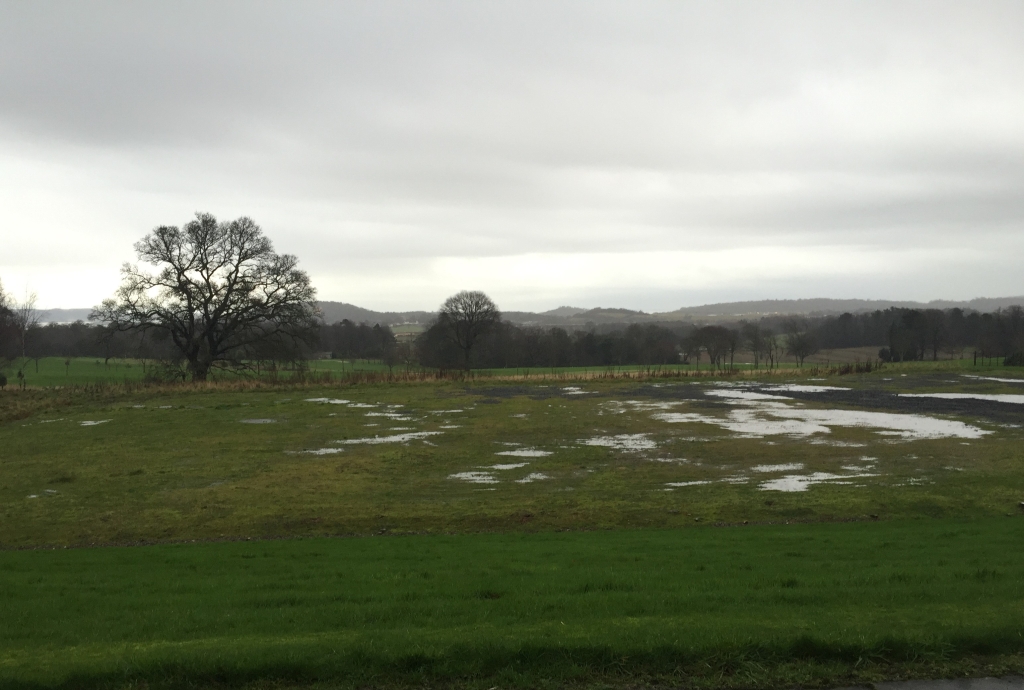How Flooding Impacts Livestock And Farm Operations

Table of Contents
Direct Impacts of Flooding on Livestock
Flooding poses immediate and long-term threats to livestock welfare and farm profitability. The severity of the flooding impact on livestock depends on factors such as the depth and duration of the floodwaters, the type of livestock affected, and the availability of emergency preparedness measures.
Drowning and Injury
The most immediate danger is drowning. Livestock, particularly those confined to low-lying areas or unable to swim easily, are highly vulnerable. Sheep, cattle, and poultry are especially at risk. Strong currents and debris carried by floodwaters can also inflict severe injuries, leading to lameness, broken bones, and even death.
- Examples of vulnerable livestock: Sheep, cattle, pigs, poultry, goats.
- Types of injuries: Drowning, hypothermia, broken bones, lacerations, infections.
- Minimizing losses: Quick evacuation to higher ground is crucial. Preparation of emergency routes and holding areas is vital for minimizing losses from drowning and injuries.
Disease and Infection
Floodwaters are breeding grounds for pathogens. Contaminated water sources lead to the spread of various diseases among livestock, increasing their susceptibility to illness. The risk of waterborne diseases is significantly heightened.
- Diseases spread by floodwaters: Leptospirosis, E. coli, Salmonella.
- Post-flood sanitation: Thorough cleaning and disinfection of water troughs, barns, and pastures are vital. Vaccination programs can help protect against some diseases.
- Impact on production: Illness can reduce milk yield, meat production, and egg laying, significantly affecting farm income.
Loss of Feed and Forage
Flooding devastates crops and pastures, leading to severe feed shortages and malnutrition in livestock. The destruction of hayfields, silage, and grain crops creates a significant challenge for farmers. Access to and transport of feed become major logistical obstacles after a flood.
- Feed crops destroyed: Corn, alfalfa, hay, soybeans.
- Supplementing feed: Farmers may need to find alternative feed sources, which can be costly. Careful rationing of available feed is essential.
- Long-term economic impact: Feed loss can lead to prolonged periods of reduced productivity and significant financial losses.
Impacts on Farm Infrastructure and Operations
The flooding impact on livestock and farms extends beyond the animals themselves; farm infrastructure and daily operations suffer significant disruptions.
Damage to Farm Buildings and Equipment
Floodwaters cause extensive damage to barns, silos, fences, and farm machinery. The cost of repairs or replacements can be substantial, crippling small farms financially.
- Vulnerable structures: Barns, silos, sheds, equipment storage facilities, fences.
- Repair vs. rebuilding: The extent of damage determines whether repair or complete rebuilding is more cost-effective.
- Insurance coverage: Flood insurance is crucial, but policies may not cover all losses.
Soil Degradation and Crop Loss
Flooding severely impacts soil quality. Erosion, sediment deposition, and changes in soil structure reduce fertility and crop yields for years to come.
- Impact on soil: Reduced nutrient content, compaction, loss of topsoil.
- Long-term effects on crops: Reduced yields, increased susceptibility to diseases and pests.
- Soil remediation: This process can be lengthy and expensive, requiring specialized techniques.
Disruption of Farm Operations
Flooding disrupts every aspect of farm operations. Access to farms becomes challenging, impacting livestock management, harvesting, and daily tasks. Labor shortages and supply chain disruptions further compound the difficulties.
- Transportation difficulties: Moving livestock, produce, and equipment becomes nearly impossible.
- Impact on income: Reduced production and inability to sell produce lead to substantial income loss.
- Government assistance: Farmers can apply for disaster relief funds and other support programs.
Mitigation and Recovery Strategies
Effective strategies are crucial to minimize the flooding impact on livestock and farms.
Pre-Flood Preparation
Developing a comprehensive flood preparedness plan is essential. This includes livestock evacuation procedures, securing valuable equipment, and purchasing flood insurance.
- Pre-flood actions: Identify high-risk areas, establish evacuation routes, secure important documents, prepare emergency supplies, and consider flood insurance.
- Emergency contact list: Maintain a list of emergency contacts including veterinarians, government agencies, and neighbors.
- Regular plan review: Review and update the plan regularly, adapting it to changing conditions.
Post-Flood Response
Immediate action is vital after a flood. This includes assessing damage, securing livestock, and seeking veterinary assistance.
- Post-flood actions: Secure livestock, assess damage to infrastructure and crops, seek veterinary care for injured animals, clean and disinfect affected areas, and contact insurance companies and government agencies.
- Livestock rescue: Safe and humane methods must be employed when rescuing stranded livestock.
- Disaster relief: Apply for available disaster relief funds and other government assistance.
Long-Term Recovery
Rebuilding farm infrastructure, restoring soil health, and resuming normal operations requires careful planning and may take considerable time.
- Land and crop restoration: Implement appropriate soil remediation and land management techniques.
- Financial planning: Seek loans, grants, and other financial assistance for recovery.
- Mental health support: Acknowledge the emotional toll of flood damage and access support if needed.
Conclusion
The flooding impact on livestock and farms is devastating, resulting in significant economic losses and emotional distress for farmers. However, proactive planning and effective response strategies can mitigate the effects. Developing a comprehensive flood preparedness plan, including livestock evacuation procedures, infrastructure protection, and insurance coverage, is crucial. Familiarize yourself with post-flood recovery strategies and available government resources. Don't wait until it's too late. Protect your farm and your livelihood by creating a detailed flood preparedness plan today. Visit [link to relevant government website] and [link to relevant agricultural organization] for more information and assistance.

Featured Posts
-
 Analyzing John Wick Uncovering The Single True Iteration Of The Character
May 07, 2025
Analyzing John Wick Uncovering The Single True Iteration Of The Character
May 07, 2025 -
 Isabela Merced The Last Of Us 8 Filmes Que Voce Precisa Ver
May 07, 2025
Isabela Merced The Last Of Us 8 Filmes Que Voce Precisa Ver
May 07, 2025 -
 Wash U Commencement Simone Biles To Inspire 2025 Graduates
May 07, 2025
Wash U Commencement Simone Biles To Inspire 2025 Graduates
May 07, 2025 -
 Anthony Edwards Shoving Match What Happened And Whats Next
May 07, 2025
Anthony Edwards Shoving Match What Happened And Whats Next
May 07, 2025 -
 Parklands Us 9 Billion Acquisition June Shareholder Vote Decides Fate
May 07, 2025
Parklands Us 9 Billion Acquisition June Shareholder Vote Decides Fate
May 07, 2025
Latest Posts
-
 The Top 10 Krypto Stories You Need To Read
May 08, 2025
The Top 10 Krypto Stories You Need To Read
May 08, 2025 -
 Kryptos Greatest Adventures A Selection Of The Best Stories
May 08, 2025
Kryptos Greatest Adventures A Selection Of The Best Stories
May 08, 2025 -
 New Superman Movie 5 Minute Krypto Preview Unveiled
May 08, 2025
New Superman Movie 5 Minute Krypto Preview Unveiled
May 08, 2025 -
 Reviewing The Best Krypto Stories A Comprehensive Guide
May 08, 2025
Reviewing The Best Krypto Stories A Comprehensive Guide
May 08, 2025 -
 Consumer Protection Agency Sues Lidl For Alleged Plus App Issues
May 08, 2025
Consumer Protection Agency Sues Lidl For Alleged Plus App Issues
May 08, 2025
